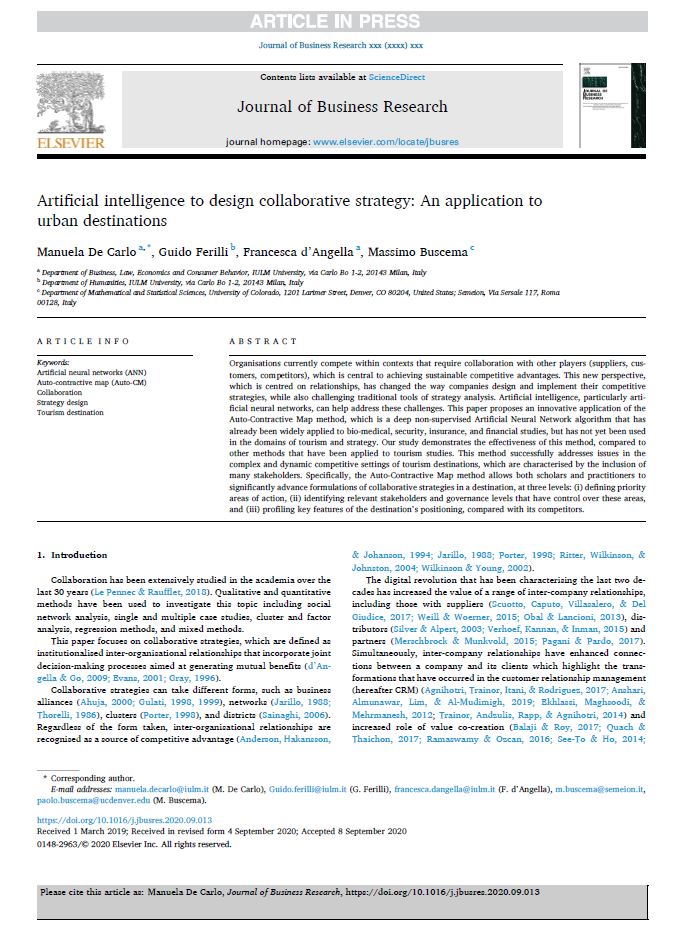 |
M. De Carlo, G. Ferilli , F. d’Angella, M. Buscema
Artificial intelligence to design collaborative strategy: An application to urban destinations, in Journal of Business Research, Elsevier, |
Abstract
Organisations currently compete within contexts that require collaboration with other players (suppliers, customers, competitors), which is central to achieving sustainable competitive advantages. This new perspective, which is centred on relationships, has changed the way companies design and implement their competitive strategies, while also challenging traditional tools of strategy analysis. Artificial intelligence, particularly artificial neural networks, can help address these challenges. This paper proposes an innovative application of the Auto-Contractive Map method, which is a deep non-supervised Artificial Neural Network algorithm that has already been widely applied to bio-medical, security, insurance, and financial studies, but has not yet been used in the domains of tourism and strategy. Our study demonstrates the effectiveness of this method, compared to other methods that have been applied to tourism studies. This method successfully addresses issues in the complex and dynamic competitive settings of tourism destinations, which are characterised by the inclusion of many stakeholders. Specifically, the Auto-Contractive Map method allows both scholars and practitioners to significantly advance formulations of collaborative strategies in a destination, at three levels: (i) defining priority areas of action, (ii) identifying relevant stakeholders and governance levels that have control over these areas, and (iii) profiling key features of the destination’s positioning, compared with its competitors.
